The USDA Plant Introduction Program
Karen A. Williams, USDA-ARS National Germplasm Resources Laboratory, 10300 Baltimore Ave., Beltsville, Maryland 20705
Gayle M. Volk, USDA-ARS National Laboratory for Genetic Resources Preservation, 1111 S. Mason St., Fort Collins, Colorado, 80521 (Gayle.Volk@usda.gov)
Outline
- Introduction
- A brief history of the USDA Plant Introduction Program
- National Plant Germplasm System Exploration and Exchange Program
- Historic plant collectors
- References
- Acknowledgments
1. Introduction
Plant introduction has been fundamental to the agricultural development of North America. Before Europeans arrived on the continent, crops from Central and South America were distributed and domesticated by different groups of Native Americans far from the regions of their origins. Early European settlers brought with them crops from other parts of the world. As agriculture in the United States (U.S.) developed, the need for diverse forms of crops already present and new crops led to efforts by individuals and the federal government to acquire plant genetic resources from outside the country. These efforts were formalized by the establishment of the Section of Seed and Plant Introduction in the U.S. Department of Agriculture in 1898. The Section sent plant explorers around the world to collect plants that might be useful in the U.S.; brief biographies of some early explorers are provided herein. The U.S. National Plant Germplasm System (NPGS), managed by the USDA Agricultural Research Service, is currently responsible for safeguarding the genetic diversity of agriculturally important plants for the U.S. The USDA Plant Exchange Office coordinates plant introduction activities for the NPGS.
2. A brief history of the USDA plant introduction program
Early in the history of the United States, many individuals and agricultural societies actively introduced plants. One of the best-known individuals was Thomas Jefferson, who collected plants and seeds during his travels abroad and received numerous shipments from friends in various countries. Some of the first official U.S. Government attempts at encouraging plant introduction into the United States were circulars sent out by the Treasury Department in 1819 and 1827 requesting that naval and consular officials in foreign countries send plants or seeds that might be useful to American agriculture. From 1836 until 1862, the Patent Office oversaw plant introduction, first under the Department of State and later under the Department of the Interior. In 1839, Henry Ellsworth, Commissioner of Patents, initiated a program to send introduced seeds to American farmers, using the franking privileges of Congressional representatives. The Congressional Seed Distribution program lasted over 80 years and permitted wide experimentation on potential new crops. James Morrow, acting as a representative of the Patent Office, accompanied the Perry Naval Expedition to Japan in 1853, to collect seeds and plants. The Commissioner of Patents hired Robert Fortune in 1858 to collect tea seed in China.
In 1862, President Abraham Lincoln established the Department of Agriculture, with plant introduction as one of the foundational purposes. The Organic Act, enacted by Congress to form the new Department, listed as one of the main duties “to procure, propagate, and distribute among the people new and valuable seeds and plants.” The new department assumed responsibility for the existing Congressional Seed Distribution program, which continued until 1923. Bilateral exchange of seeds and plants with foreign governments began in the early days of the Department. Introductions through the end of the 19th century included germplasm of wheat, oats, ramie, cotton, jute, figs, flax, grapes, opium poppy, eucalyptus, sugar beets, grasses, citrus fruits, dates, persimmons, cinchona, and tea.
A 24-minute silent film was produced by the USDA Bureau of Plant Industry, showcasing early plant introductions and their impact on U.S. agriculture.
Following the Department’s promotion to executive status in 1889, Congressional funding for agriculture increased. At the end of the 19th century, demand was high in the US for new crops that could diversify agriculture, replace imports, and grow in a variety of climatic and edaphic conditions. When James Williams became the Secretary of Agriculture in 1897, his first act was to send Niels E. Hansen of the South Dakota College of Agriculture to Russia, China, and other countries to collect alfalfa and other forage crops over a period of 10 months. Soon after, at the urging of David Fairchild and Walter Swingle, Secretary of Agriculture Wilson created the Section of Seed and Plant Introduction. The Appropriation Bill designating the initial $20,000 for the Section stated that the objectives were to “collect, purchase, test, propagate, and distribute rare and valuable seeds, bulbs, trees, shrubs, vines, cuttings and plants from foreign countries for experiments with reference to their introduction into this country.” The plant materials notably were not destined for the general seed distribution program, but were to be tested in cooperation with agricultural experiment stations or retained by the Department for testing. The Congressional general seed distribution program was placed under the management of another unit, the Seed Division.
David Fairchild was the first administrator of the Section of Seed and Plant Introduction and continued to play a dominant role in shaping it for 27 years. His vision was to make plant introduction systematic and scientific. Soon after becoming Section leader, he temporarily relinquished his position while he undertook a five-year world tour to study and collect plants, and establish contacts for plant exchange. During his absence, his associates in the Section took over the administrative leadership: O.F. Cook (1898–1900), Jared G. Smith (1900–1901) and Ernst A. Bessey (1901–1903). Cook is credited with initiating in 1898 the practice of assigning a unique number to each plant that was introduced through the Section, including those from plant explorations and other sources. The numbers and associated plants, along with information on their origin and characteristics, were published in the “Inventory of Foreign Seeds and Plants.” Information included scientific and common names, source information including locality data, and descriptive, ecological or economic notes. The numbers came to be known as Plant Introduction (P.I.) numbers; they continue to be assigned to introductions today and provide a ready reference to the original source information. Cook is also responsible for creating the title “Agricultural Explorer” to replace “Special Agent,” which had caused some plant explorers to be treated suspiciously when traveling in other countries.
From the beginning, the Section of Seed and Plant Introduction obtained much of its plant material through exchange, purchase, and as gifts. Some of the material was obtained for specific uses in breeding programs or for use in diversifying agriculture in a specific part of the country. Plant explorations were undertaken when there were no other means to obtain the material or when a survey of a region was desired to locate material adapted to specific environments. The Section employed some scientists as full time USDA agricultural explorers and hired other Federal or State scientists for temporary assignments collecting plants.
Introduction is only the first step in identifying and putting into use new plants or crops, or new varieties of known crops. After their introduction, plants must be increased or propagated, tested to determine their characteristics, and distributed to people who will use them. There was originally no intent to indefinitely maintain introduced germplasm under the management of the federal government. Introductions in the first half-century after the Section of Seed and Plant Introduction was established were sent to State Agricultural Experiment Stations, crop experts within the USDA, and other cooperators. In addition, several federal plant introduction gardens were established mainly for plants in quarantine, woody species, some other ornamental species, and little-known plants. The first garden was established on a six-acre tract in Miami, Florida in the same year that the program for plant introduction began, but the plants were transferred to a new garden established near Coconut Grove in 1922. A garden established in Chico, California in 1904 was largely the result of enthusiastic citizens purchasing 80 acres of land for this purpose and gifting it to the Federal government. A garden was established in 1919 in Glenn Dale, Maryland, near the USDA headquarters in Washington, D.C., to provide care quickly to introduced plants weakened in long transit from abroad and those in need of quarantine. The Barbour Lathrop Plant Introduction Garden in Savannah, Georgia was also established in 1919, with the initial goal of preserving giant timber bamboo that had been established on the site. Other gardens were located at Brownsville, Texas; Bellingham, Washington; Yarrow, Maryland; and Brooksville, Florida. Many of the plants sent to these gardens were collections made by plant explorers sent into the field by the Section. The individual gardens remained in service for varying lengths of time, with some eventually being repurposed; for example, the Glen Dale station became a quarantine facility, and in 1987 a repository for woody ornamentals.
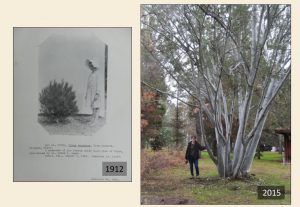 Figure 1. (Left) An accession (PI 23019) of lacebark pine (Pinus bungeana) collected by Frank Meyer in Soochow, Jiangsu, China in 1908 and planted at the USDA Chico Plant Introduction Garden, California in 1912. This pine was said to be one of Meyer’s favorite plants. Photo credit: Chico State University Meriam Library Special Collections and University Archives. (Right) The same accession in 2015. Photo credit: E.J. Garvey.
Figure 1. (Left) An accession (PI 23019) of lacebark pine (Pinus bungeana) collected by Frank Meyer in Soochow, Jiangsu, China in 1908 and planted at the USDA Chico Plant Introduction Garden, California in 1912. This pine was said to be one of Meyer’s favorite plants. Photo credit: Chico State University Meriam Library Special Collections and University Archives. (Right) The same accession in 2015. Photo credit: E.J. Garvey.
The name and organizational placement of the USDA unit responsible for plant introduction and exploration changed several times in the decades following its establishment (White et al. 1989). No explorations were conducted during the years of World War II. Soon after the war ended, the passage of the Research and Marketing Act (RMA) of 1946 initiated a major step in the evolution of the plant introduction program and provided for the long-term preservation of the acquired materials. The RMA led to the establishment of a formal National Cooperative Program to acquire, test, and preserve plant introductions. In the following six years, funds allocated to the States for cooperative research were used to create four Regional Plant Introduction Stations (Ames, Iowa; Pullman, Washington; Geneva, New York; and Griffin, Georgia) and a National Introduction Station for Potatoes (Sturgeon Bay, Wisconsin), with the functions of introduction, evaluation, cataloging, preservation and distribution of plants from both foreign and domestic sources. The USDA plant introduction unit retained the main responsibility for exploration and introduction, working in close cooperation with the regional programs. Many explorations were initiated in direct response to priorities identified by crop researchers representing the regions. The first domestic explorations were conducted in the 1950s.
3. The National Plant Germplasm System plant exploration and exchange program
The Plant Exploration and Exchange Program supports plant explorations to acquire germplasm to fill gaps in the US National Plant Germplasm System (NPGS) collections. Plant explorations involve collection of traditional landraces, crop wild relatives, and other wild plants directly from in situ conditions, in the U.S. and other countries. The Program also occasionally supports plant exchange projects to arrange exchange of germplasm with genebanks in other countries.
The USDA-ARS National Germplasm Resources Laboratory’s Plant Exchange Office (PEO) manages the Plant Exploration and Exchange Program. The PEO traces its origins to the USDA Office of Seed and Plant Introduction that was created in 1898. Approximately 800 explorations and exchanges have been conducted under the Program since its inception. Although botanists in PEO sometimes participate in today’s explorations, most are conducted by NPGS curators or other qualified scientists.
Explorations and exchanges are chosen for support based on proposals prepared using detailed guidelines distributed by the PEO. Proposals are accepted yearly in July and reviewed by a committee of NPGS personnel and other scientists. The relevant Crop Germplasm Committee (CGC), which is composed of scientist users with expertise on the specific crop or group of crops, must endorse the proposal before it can be considered. The NPGS curator responsible for the taxa to be collected also provides input on the proposal and agrees to accept the collected germplasm.
Documentation
Complete documentation of germplasm collections increases the likelihood that they will be useful to researchers and breeders. All germplasm collected on NPGS explorations is documented with complete passport data, including collector numbers, locality data (including latitude, longitude and elevation), associated vegetation, habitat description, plant characteristics, local uses and other data as appropriate for specific purposes. The passport data are incorporated into the GRIN-Global database when the accessions are deposited in the NPGS. Herbarium vouchers also are important to document collections of wild materials.
Code of Conduct
Foreign explorations supported by this program follow a Code of Conduct, developed to ensure that ethical and conservation issues are carefully considered. Foreign explorations are always conducted in cooperation with scientists from the host country and involve one or two scientists from the U.S. Germplasm obtained is divided between the U.S. and the host country. Explorers take precautions not to endanger the existence of wild populations from which they collect germplasm samples. The Code of Conduct drafted for the USDA Plant Exploration Program had a major influence on the development of the FAO International Code of Conduct for Plant Germplasm Collecting and Transfer, now widely accepted around the world.
International and national laws on access and benefit sharing
All foreign plant explorations sponsored by the PEO are conducted in accordance with the Convention on Biological Diversity (CBD) and other international treaties, as well as the national laws of host countries. Prior informed consent for access on mutually agreed terms for the sharing of benefits is obtained from national authorities. Subsets of all germplasm and herbarium vouchers are deposited with institutions in the host country. Significant non-monetary benefits for the host country are associated with explorations.
Plant health
Prevention of accidental introduction of diseases, insects, noxious weeds and other organisms is an important element of the Program. Explorers on NPGS expeditions follow the plant quarantine laws and regulations administered by the USDA Animal and Plant Health Inspection Service (APHIS) and equivalent agencies in other countries. Explorers check with APHIS before traveling to determine if the target plants can be imported and if specific import permits are required. Germplasm of plants not requiring specific import permits must be accompanied by a phytosanitary certificate from the country of origin. Once germplasm is imported into the U.S., it is inspected by APHIS personnel for evidence of insect, disease or weed contamination, and treated appropriately, if necessary. After being released by APHIS, germplasm is sent to the NPGS crop curator or to an appropriate quarantine facility.
4. Historic plant collectors
USDA has sponsored Plant Exploration programs for over a century. Here is a link to a short article about USDA plant explorers, with information on David Fairchild and Palemon H. Dorsett’s collection trip to Ceylon, Sumatra, and Java in 1925–1926. Here is a direct link to a 21-minute silent film from that exploration.
Figure 2. Stills taken from historical footage of Fairchild and Dorsett’s plant exploration trips. (Left) Bamboo used for construction in Java, Indonesia. (Right) Pile of betel nuts in Ceylon (modern day Sri Lanka). Footage available from USDA National Agricultural Library.
Palemon H. Dorsett
Palemon Howard Dorsett was born in Carlinville, Illinois in 1862. He received a B.S. degree from the University of Missouri in 1884. In 1891, he joined the USDA Section of Plant Pathology, where he worked for several years on plant disease issues. From 1909 to 1932, he assumed multiple responsibilities in the USDA plant introduction unit, including plant explorer, office administrator and developer of introduction gardens. His plant explorations took him to Brazil, China, Sri Lanka, Indonesia, Japan, Korea, Panama, the Caribbean, and South America. He played a leading role in developing six plant introduction gardens in the U.S. and oversaw the Chico Plant Introduction Garden in California from 1904 to 1907. He took up photography early in his career and used his skill to document both plant explorations and plant introductions gardens. Dorsett and his colleague, William Joseph Morse, who was a soybean specialist, collected over 4,000 soybean accessions in China, Japan and Korea on an expedition lasting from 1929 to 1931. Their careful notes are preserved in a typewritten log of their expedition, which fills 17 volumes and includes over 3,000 glossy black and white photographs; it is now preserved in the USDA National Agricultural Library Special Collections in Beltsville, Maryland. They also collected thousands of accessions of other plants, totaling approximately 9,000 in all. In 1936, Dorsett was awarded the 13th Frank N. Meyer Medal for his contributions to collection, preservation and utilization of germplasm resources.
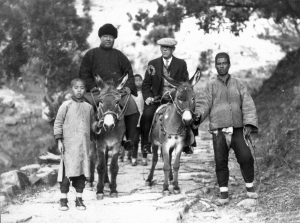 Figure 3. Near Pa La Chu Western Hills, west of Peiping, China. P.H. Dorsett and his Chinese interpreter Aiten Liu. Photo credit: Special Collections, USDA National Agricultural Library.
Figure 3. Near Pa La Chu Western Hills, west of Peiping, China. P.H. Dorsett and his Chinese interpreter Aiten Liu. Photo credit: Special Collections, USDA National Agricultural Library.
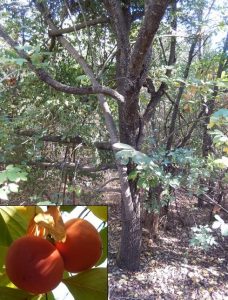 Figure 4. This persimmon collected by Dorsett and Morse in Korea in 1929 (PI 83709) was discovered in 2015 at the former Chico Plant Introduction Garden that is now a USDA Forest Service station. Cuttings were made of this and 25 other persimmons introduced over 80 years ago and the accessions are now in the NPGS collection in Davis, California (Williams, 2005). Photo credit: Karen Williams.
Figure 4. This persimmon collected by Dorsett and Morse in Korea in 1929 (PI 83709) was discovered in 2015 at the former Chico Plant Introduction Garden that is now a USDA Forest Service station. Cuttings were made of this and 25 other persimmons introduced over 80 years ago and the accessions are now in the NPGS collection in Davis, California (Williams, 2005). Photo credit: Karen Williams.
Niels E. Hansen
Dr. Niels Hansen (1866–1950) was born in Denmark and immigrated to New York City when he was 7 years old. After he obtained his degree at Iowa State Agricultural College, he accepted a position South Dakota State College, where he bred cold-hardy fruit crops. He led plant explorations in Northern Europe, Russia, Turkistan, China, and Canada to identify hardy plants for the U.S. These included alfalfa, crested wheat grass, brome grass, proso millet, red-fleshed apples, melons, and various fruits. His breeding and selection programs developed new varieties of apples, Prunus, grapes, raspberries, currants, and strawberries (Pritts, 2019).
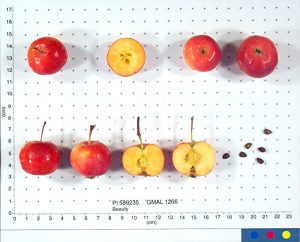 Figure 5. Apple cultivar “Beauty” was developed by Niels Hansen, is currently available in the USDA-National Plant Germplasm System. Photo credit: USDA-ARS.
Figure 5. Apple cultivar “Beauty” was developed by Niels Hansen, is currently available in the USDA-National Plant Germplasm System. Photo credit: USDA-ARS.
David G. Fairchild
Dr. David G. Fairchild (1869–1954) was born in Michigan and his family moved to Kansas when he was ten years old. In 1888 he graduated from Kansas State College of Agriculture and moved to Iowa State Agricultural College for graduate school. After some travel, he and Dr. Swingle worked with the Secretary of Agriculture to establish the Section of Foreign Seed and Plant Introduction within USDA, of which he became the chief. Dr. Fairchild traveled the world collecting a diverse array of plants, including citrons, mangoes, sour citrus, hardy avocados, spineless cactus, seedless grapes, pummelos, hops, hazelnuts, grapes, carob, walnuts, olives, lemons, dates, pistachios, blood oranges, almonds, peaches, persimmons, litchis, plums, mangosteens, loquats, bamboo, pineapples, jujubes, and even introduced the flowering cherry trees to Washington, D.C. Dr. Fairchild also established the Meyer Medal with $1000 that was gifted from Frank Meyer when he passed away. By the time that Dr. Fairchild retired from USDA in 1933, he and his explorers had introduced more than 80,000 accessions into the U.S. The Office of Plant Introduction later became the current USDA-National Plant Germplasm System. The Fairchild Tropical Botanic Garden was named in honor of Dr. David Fairchild (Bassil, 2019).
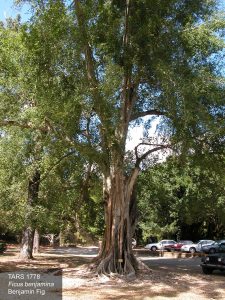 Figure 6. This fig tree was collected by David Fairchild in Sumatera, Indonesia and was donated to the USDA-National Plant Germplasm System in 1926.
Figure 6. This fig tree was collected by David Fairchild in Sumatera, Indonesia and was donated to the USDA-National Plant Germplasm System in 1926.
Walter T. Swingle
Dr. Walter T. Swingle (1871–1952) was born in Pennsylvania and was raised in Kansas. He received his degrees from Kansas State Agricultural College (now Kansas State University) and he was hired by the USDA in 1891. He established a Citrus breeding program to develop disease- and frost-resistant citrus. He helped establish the USDA Office of Foreign Seed and Plant Introduction and set up USDA plant introduction facilities in Miami, Florida. He performed collection trips in France, Sicily, Italy, North Africa, Greece and Asia Minor and introduced date palms, figs, table grapes, ‘Clementine’ mandarins, and others (Stover and Wright, 2019).
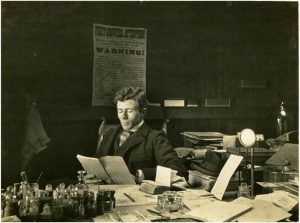 Figure 7. Dr. Walter Swingle reading in his laboratory at USDA in Washington, D.C. in 1893. Photo credit: Fairchild Botanic Garden Archives, courtesy of Ed Stover.
Figure 7. Dr. Walter Swingle reading in his laboratory at USDA in Washington, D.C. in 1893. Photo credit: Fairchild Botanic Garden Archives, courtesy of Ed Stover.
Frank N. Meyer
Dr. Frank N. Meyer (1875–1918) was born (nee Frans Meijer) in The Netherlands and studied at the University of Amsterdam. He traveled to America in 1901 and in 1903 began collecting plants in Mexico and Cuba, which were shipped to the Chico Plant Introduction Garden. He was hired by the USDA Office of Seed and Plant Introduction in 1905 to explore and collect plants in Asia. Dr. Meyer conducted explorations in China and Russia from 1905–1908, in Russian Turkistan and China in 1909–1912, in China in 1912–1915, and in China in 1916–1918. He collected and introduced to the U.S. more than 2500 diverse genetic resources of fruit and nut crops including persimmon, grapes, walnuts, pistachios, pears, cherries, apricots, blackberries, plums, lemons, quinces, hazelnuts, Citrus sp., apples, peaches, olives, almonds, pomegranates, currants, chestnut, litchi, hickory, kiwifruit (Warmund, 2019).
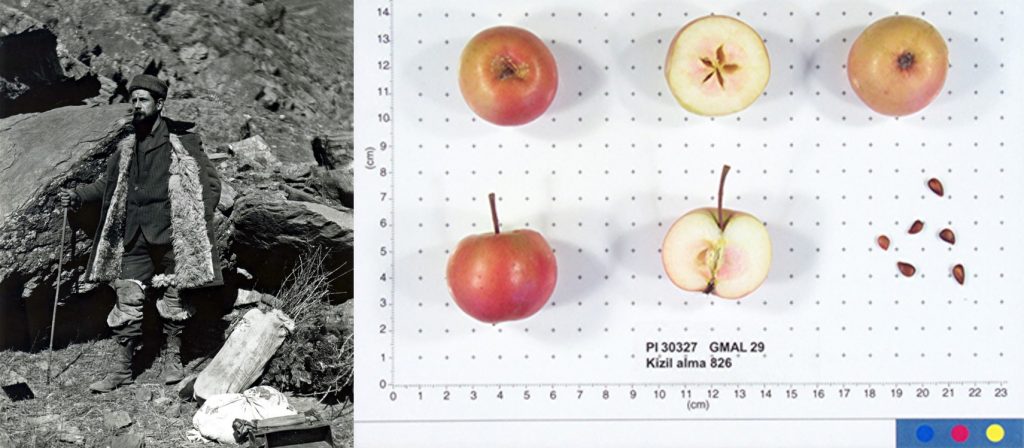 Figure 8. (Left) Portrait of Frank N. Meyer. Photo credit: Special Collections, USDA National Agricultural Library. (Right) Frank Meyer collected this wild apple accession in 1910 in Chinese Turkestan, which is now part of China. Photo credit: USDA-ARS.
Figure 8. (Left) Portrait of Frank N. Meyer. Photo credit: Special Collections, USDA National Agricultural Library. (Right) Frank Meyer collected this wild apple accession in 1910 in Chinese Turkestan, which is now part of China. Photo credit: USDA-ARS.
Howard Scott Gentry
Dr. Howard Scott Gentry (1903–1993) was an economic botanist, plant explorer, and ethnographer. He was raised in California and earned a Ph.D. in botany from the University of Michigan in 1947. He was a freelance plant collector and fossil hunter in northwestern Mexico and the Southwestern U.S. and published Rio Mayo Plants, describing the botany and anthropology of the indigenous plants and peoples in the Sonora region. He identified guayule (Parthenium) and the rubber vine (Cryptostegia) as plants that could be used for domestic rubber production. In 1950, he began his tenure as a plant explorer for USDA, a pursuit that lasted for 21 years. He collected more than 15,000 samples on eighteen expeditions in the southwestern U.S., Mexico, Central America, Europe, Asia, and Africa. As part of a project to collect potential steroid precursors of cortisone, Gentry collected large numbers of samples of Agave in Mexico and the southwestern U.S. and Dioscorea in Mexico and Central America. After retirement, Gentry joined the staff of the Desert Botanical Garden in Phoenix, where he collected and developed new crops for arid and semi-arid environments, including guayule, gum tragacanth, chia, and jojoba.
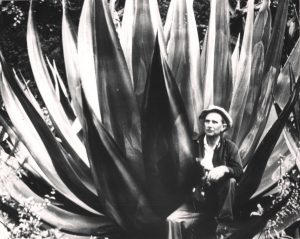 Figure 9. Howard Scott Gentry in the “arms” of his beloved “maguey,” Agave atrovirens, in the mountains of Oaxaca, Mexico, 1963. Photo credit: Arthur Barclay, USDA (caption is his).
Figure 9. Howard Scott Gentry in the “arms” of his beloved “maguey,” Agave atrovirens, in the mountains of Oaxaca, Mexico, 1963. Photo credit: Arthur Barclay, USDA (caption is his).
5. References
Bassil NV. 2019. David Grandison Fairchild: Plant hunter extraordinaire and father of foreign plant introduction. The Journal of the American Pomological Society 73:139-144.
Pritts M. 2019. Niels Ebbesen Hansen: A man with a vision for the unfathomable. The Journal of the American Pomological Society 73:110-114.
Stover E, Wright G. 2019. Walter Tennyson Swingle: A relentless intellect that transformed American pomology. The Journal of the American Pomological Society 73:129-138.
Warmund MR. 2019. Frank Nicholas Meyer: An emigrant’s lifelong search for plant immigrants. The Journal of the American Pomological Society 73:115-128.
White GA, Shands HL, Lovell GR. 1989. History and operation of the National Plant Germplasm System. Plant Breeding Reviews 7:5-56.
Williams KA. 2005. An overview of the U.S. National Plant Germplasm System’s Exploration Program. HortScience 50: 297-301.
6. Acknowledgments
Citation: Williams K, Volk GM. 2020. The USDA Plant Introduction Program. In: Volk GM, Byrne P (Eds.) Crop Wild Relatives in Genebanks. Fort Collins, Colorado: Colorado State University. Date accessed. Available from https://colostate.pressbooks.pub/cropwildrelatives/chapter/usda-plant-introduction-program/
This training module was made possible in part by funding from USDA-ARS, Colorado State University, IICA-PROCINORTE (procinorte.net), and the United States Agency for International Development (USAID).
Chapter editors: Emma Balunek, Katheryn Chen, Gayle Volk
This project was funded in part by the National Academy of Sciences (NAS) and USAID, and any opinions, findings, conclusions, or recommendations expressed in such are those of the authors alone, and do not necessarily reflect the views of USAID or NAS.



